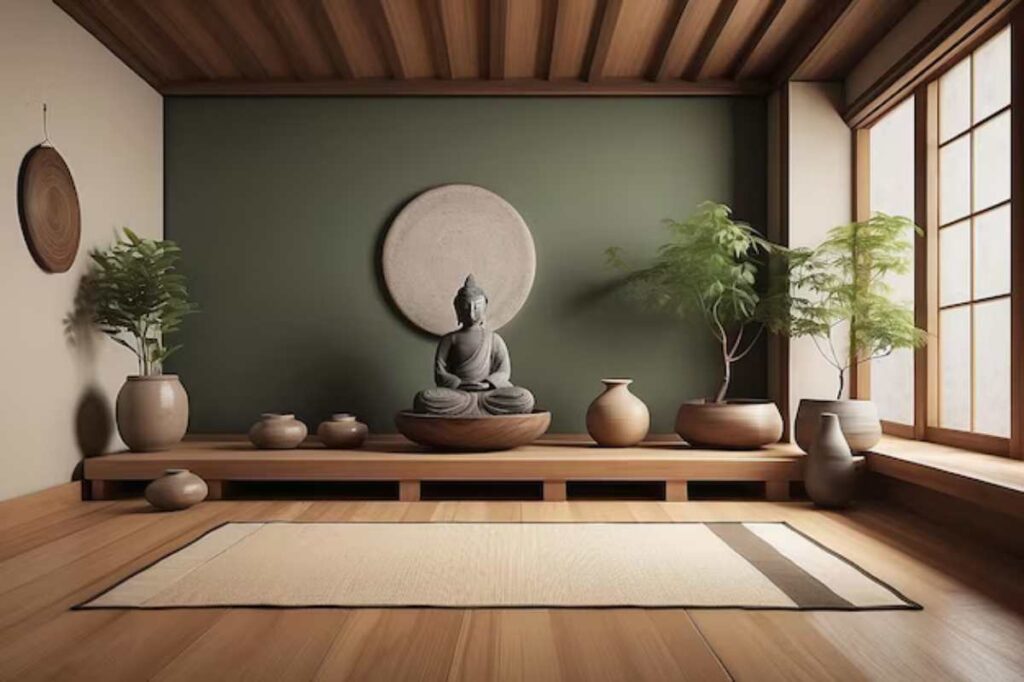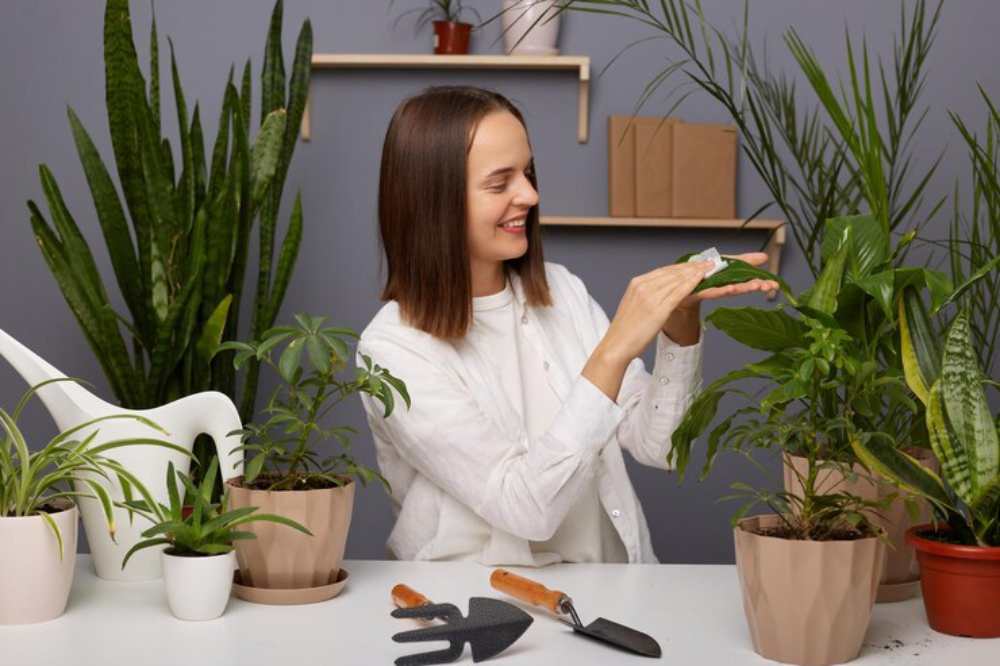The Interior Blog

Creating a Zen Nook with Minimal Greenery
Have you ever craved a quiet, calming corner in your home — a space that helps you breathe deeper, slow your thoughts, and simply be? In a world that’s often noisy, overstimulated, and packed with things, the appeal of a Zen nook couldn’t be stronger. It’s not just a trend; it’s a lifestyle choice that embraces simplicity, balance, and intentional living.
But here’s the good news: you don’t need to transform your entire home or invest in expensive decor to create this kind of space. With just a few thoughtful design choices — and the gentle power of minimal greenery — you can carve out a peaceful, soul-nourishing corner that supports mindfulness and clarity.
This article will guide you through the essentials of zen plant styling, how to select and place your greenery with purpose, and how to build a serene indoor retreat that soothes the senses — without overwhelming the space.
Why a Zen nook?
The need for inner calm
Most of us live fast-paced lives filled with constant alerts, to-do lists, and digital distractions. Creating a Zen nook at home offers a sanctuary from that chaos — a place to reset your nervous system and foster mental clarity.
Zen design is rooted in Japanese minimalism and the Buddhist philosophy of zazen (sitting meditation). It’s not about sterile emptiness, but about choosing only what serves.
When applied to interior design, it’s about:
- Clean lines and simplicity
- Natural materials
- Soft light and shadows
- Intentional use of nature, especially plants
The result is a space that feels quiet, focused, and deeply restorative.
Principles of Zen plant styling
Before diving into specific plants or furniture ideas, it’s important to understand the guiding principles of Zen plant styling. Unlike maximalist or jungle-inspired interiors, Zen design calls for:
1. Less, but meaningful
Every plant should be placed with care and purpose. You’re not creating a jungle — you’re curating presence.
2. Asymmetrical balance
Zen aesthetics favour natural, imperfect arrangements. A single plant to one side of a low table can be more powerful than a symmetrical pair.
3. Natural textures and tones
Choose planters made from ceramic, terracotta, wood, or stone. These materials mirror nature and avoid visual noise.
4. Breathing room
Plants shouldn’t crowd the space. Leave empty space around them to allow energy (chi) to flow freely.
5. Soft light
Natural, diffused light enhances the meditative quality of a Zen nook. East-facing corners are ideal for morning light that’s gentle and calming.
Choosing the right plants for a Zen nook
When it comes to tranquil greenery, not every plant makes the cut. Your goal is not lushness, but stillness. The best plants for a Zen-inspired nook are:
1. Peace Lily (Spathiphyllum)
With its elegant white flowers and glossy leaves, the Peace Lily brings both purity and softness to the space. It also improves air quality, adding to the calm.
2. ZZ Plant (Zamioculcas zamiifolia)

A low-maintenance choice, the ZZ plant has upright, waxy leaves that add structure without drama. Perfect for corners or next to seating.
3. Bamboo Palm
Tied to feng shui and Japanese garden design, the Bamboo Palm introduces vertical flow without being intrusive.
4. Snake Plant (Sansevieria)
Strong, upright, and sculptural — this is ideal if you’re looking for something architectural. Choose a dwarf variety for a more subtle statement.
5. Bonsai Tree
While not a casual choice, a bonsai tree embodies mindfulness and care. It’s a living metaphor for patience and balance, central themes in Zen living.
6. Moss Terrarium

A small moss garden in a glass bowl can bring grounding energy to your nook. It reflects woodland tranquillity in miniature form.
Setting up your indoor mindfulness space
Creating a Zen nook doesn’t require an entire room — a quiet corner will do. Here’s how to set it up:
Pick your corner
Choose a low-traffic area of your home that receives soft natural light. A bedroom corner, space by a window seat, or the end of a hallway can all work well.
Start with the basics
You’ll need just a few essentials:
- A comfortable cushion or floor chair
- A low table or wooden bench
- A single candle or essential oil diffuser
- One to three carefully chosen plants
Keep it clutter-free — every item should add value to the atmosphere.
Add natural layers
Think texture, not stuff. Layer soft throws, a jute rug, or woven baskets to make the nook tactile and inviting. Let your greenery act as the centrepiece.
For added peace, consider placing your bonsai or Peace Lily in a focal spot where your eyes naturally rest during meditation or journaling.
Styling techniques: achieving balance without clutter
Here are a few zen plant styling techniques to refine your space:
Create depth with height variation
Use plants of varying heights — a tall Bamboo Palm on the floor, a tabletop Bonsai, and a moss terrarium on a shelf. This mimics nature’s layered structure without visual chaos.
Use odd numbers
Odd numbers (like 1 or 3) feel more organic and less formal than even-numbered groupings. A trio of plants in differing sizes can anchor your space without looking forced.
Let negative space speak
Zen design treats emptiness as part of the composition. Don’t feel the need to fill every surface. A single Snake Plant in a matte ceramic pot can be more impactful than a cluttered shelf.
Opt for neutral, earthy tones
Avoid brightly coloured pots or decorative gimmicks. Keep your palette rooted in nature — think soft greys, pale woods, deep greens, and calming beiges.
Creating sensory calm: beyond the visual
Your Zen nook should engage the senses, not just the eyes. Here’s how to go beyond decor and create an immersive mindfulness space:
- Scent: Use a diffuser with lavender, sandalwood, or cedarwood essential oils. These scents promote relaxation and clarity.
- Sound: A small tabletop fountain or a background playlist with nature sounds can enhance the ambience.
- Touch: Choose textiles with soft, grounding textures — like cotton, linen, or wool.
- Sight: Use filtered natural light or warm LED lighting during evenings. Avoid harsh overhead lights.
Together with your greenery, these elements help anchor you in the present moment — the essence of mindfulness.
Maintain your plants, maintain your calm

Caring for your Zen nook should be as meditative as sitting in it.
Make plant care part of your weekly ritual:
- Wipe dust from leaves
- Rotate pots for even light
- Water consistently but mindfully
- Prune gently to maintain natural shape
Tending to your plants with presence reinforces the mindful energy of the space.
If you’re unsure how to keep them healthy long term, refer to this helpful plant cleaning and dusting guide to maintain indoor plant hygiene without stress.
Common styling mistakes to avoid
Even minimal designs can miss the mark if not thought through.
Watch out for these pitfalls:
- Too many small plants scattered randomly – This creates visual noise instead of calm.
- Bright or mismatched pots – Stick to a neutral colour scheme.
- Placing plants in dark, stuffy corners – Your greenery needs some natural light to thrive.
- Using artificial plants – Zen spaces value living presence. Opt for real, breathable plants.
- Clutter around the plants – Clear the space so each plant can be appreciated in its own right.
Conclusion: Find stillness in simple, green moments
In a fast-moving world, your Zen nook can become a haven of clarity and rest, not just visually, but energetically. With minimal greenery, thoughtful styling, and a bit of mindful attention, you can create an indoor space that nurtures your mental health and deepens your connection to the present.
You don’t need to overthink it or spend a fortune. One carefully placed plant, one soft cushion, and one moment of stillness can change how your whole day feels.
Ready to build your own mindfulness corner? Start small — choose one plant that speaks to you and let it anchor your Zen journey. And if you’ve already crafted a space like this, share your setup or tips in the comments below. Let’s grow calmer, greener homes together. And if you’re still choosing greenery, consider these beginner-friendly indoor plants that are easy to care for yet bring natural calm to your styling.









